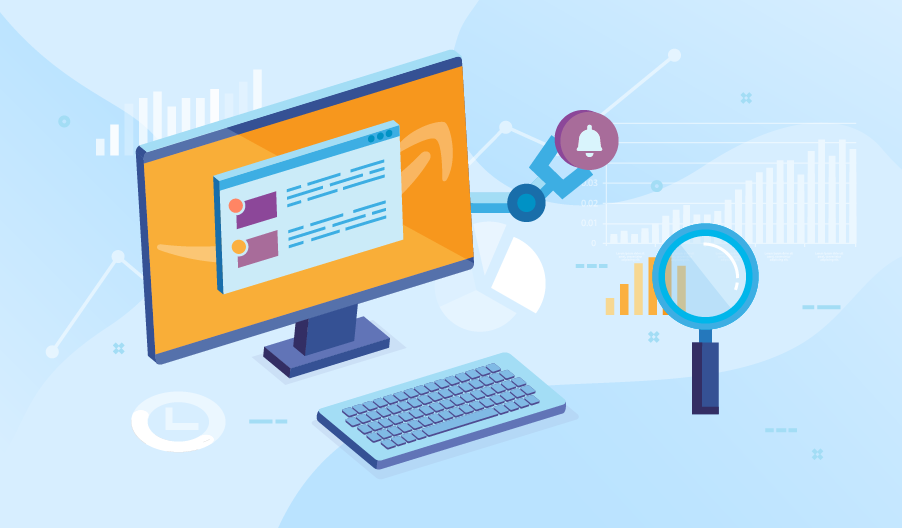Applying Best Practices for AWS Monitoring
Editor's note: An efficient monitoring approach for AWS services and applications allows minimizing infrastructure management costs and increasing your AWS system’s stability. Being an experienced provider of managed AWS services, ScienceSoft is eager to share its insights on applying best practices for AWS monitoring.
While the “Let’s see how it goes” attitude may be stress-relieving in everyday life, it’s certainly not effective in infrastructure management. A far more beneficial approach is to employ robust monitoring and use its output to foresee and prevent potential problems. See below some of ScienceSoft’s best practices for AWS monitoring taken from over 12 years of providing services to our clients.

1. Use automation where possible
For teams working to sustain the AWS environment and manage its wide array of resources within a complex enterprise IT infrastructure, automated responses to alerts are crucial. They allow you to minimize human intervention by solving problems via prewritten scripts. For example, a script can be used to scale up when memory consumption reaches critical levels. The scripts are prepared by experienced DevOps engineers and are essential to creating a dynamic AWS monitoring approach.
Automation in AWS monitoring helps companies:
- Improve cloud productivity via dynamic configuration of services, such as increasing memory or storage capacity.
- Avoid delays in issue resolution when human response to an alert is hindered by access and permission restrictions.
- Focus on remediating more critical issues, having minor tasks automated.
ScienceSoft’s cloud support team uses such tools as Zabbix and Nagios to implement proactive monitoring by executing service checks and applying event handlers to reconfigure the service when it reaches a critical state. For example, when a server is experiencing CPU usage of more than 100% over a 15-minute interval, we use a script to reboot the instance of the server.
2. Create policies to define priority levels
Predefined policies that regulate when services should generate an event or send alerts allow you to be in full control of your AWS environment. It keeps your IT management from being bombarded with notifications and having limited time to respond. Also, priority levels help you build a more sophisticated alerts processing system.
In order to implement this best practice, ScienceSoft’s team defines criteria indicating the thresholds of deviation that determine the levels of priority. Monitoring tools like Zabbix and Nagios allow us to create these rules once and easily apply changes to policies when needed by just modifying their parameters. For instance, for a Windows-based cloud-hosted system we usually define the lack of virtual memory on a server as an Average-Level issue and the lack of free physical memory as a High-Level issue. We then respond to these problems according to their priority level.
3. Resolve problems before they become critical to users
We have seen many cases in our practice when the engineering team tries to solve the problem via a temporary patch for the system, postponing the implementation of an appropriate fix. This practice might have serious negative consequences, as a minor unresolved defect may be a sign of an underlying pattern, eventually resulting in critical errors. It could also potentially create multiple layers of unmaintainable technical debt, leaving the team unable to quickly respond to issues, eventually leading to a negative impact on end-user experience.
To prevent such cases, ScienceSoft’s team tries to avoid implementing temporary fixes and approach problems head-on by providing timely solutions.
Setting up efficient AWS monitoring for your business
ScienceSoft’s best practices for implementing AWS monitoring can help ensure the stability of your cloud infrastructure by preventing and promptly resolving issues according to their severity level. However, successfully applying these practices requires the configuration of monitoring tools on a high technical level, as well as deep knowledge of cloud architecture and its peculiarities. ScienceSoft’s professional engineers are eager to help you solve these challenges.

